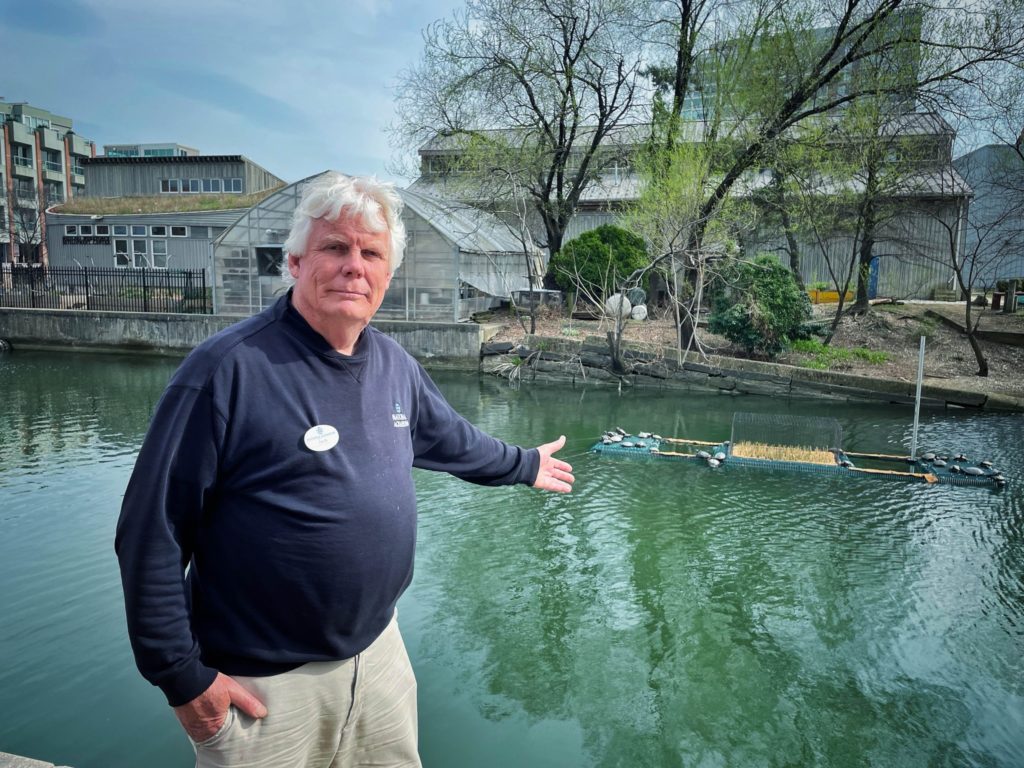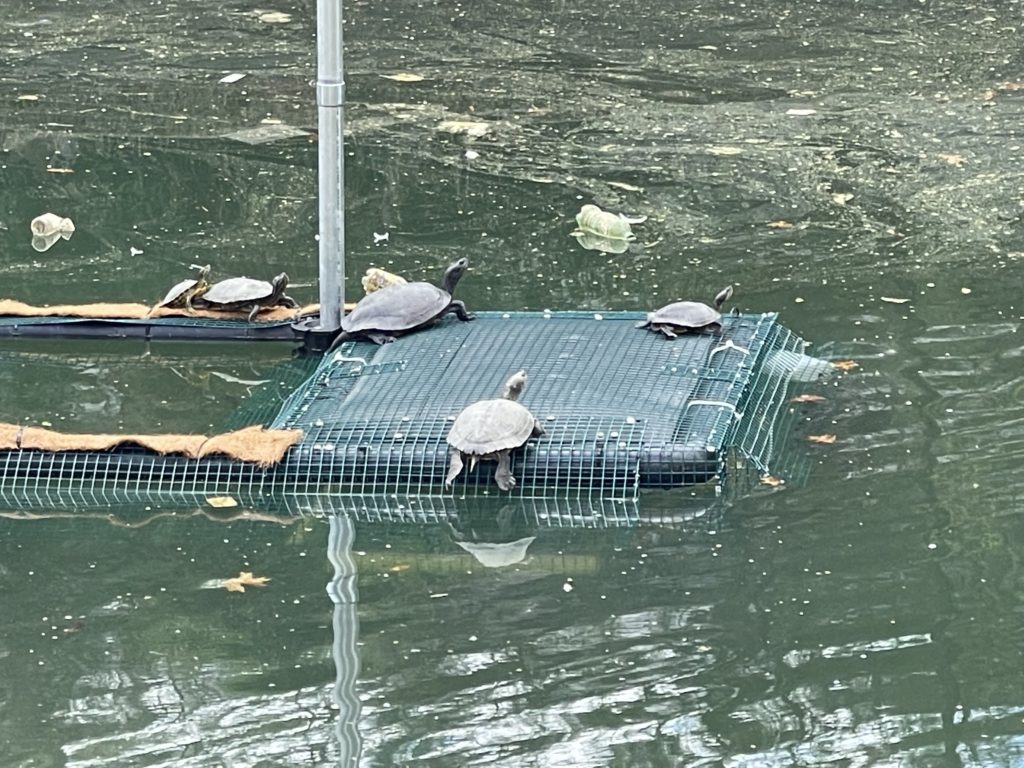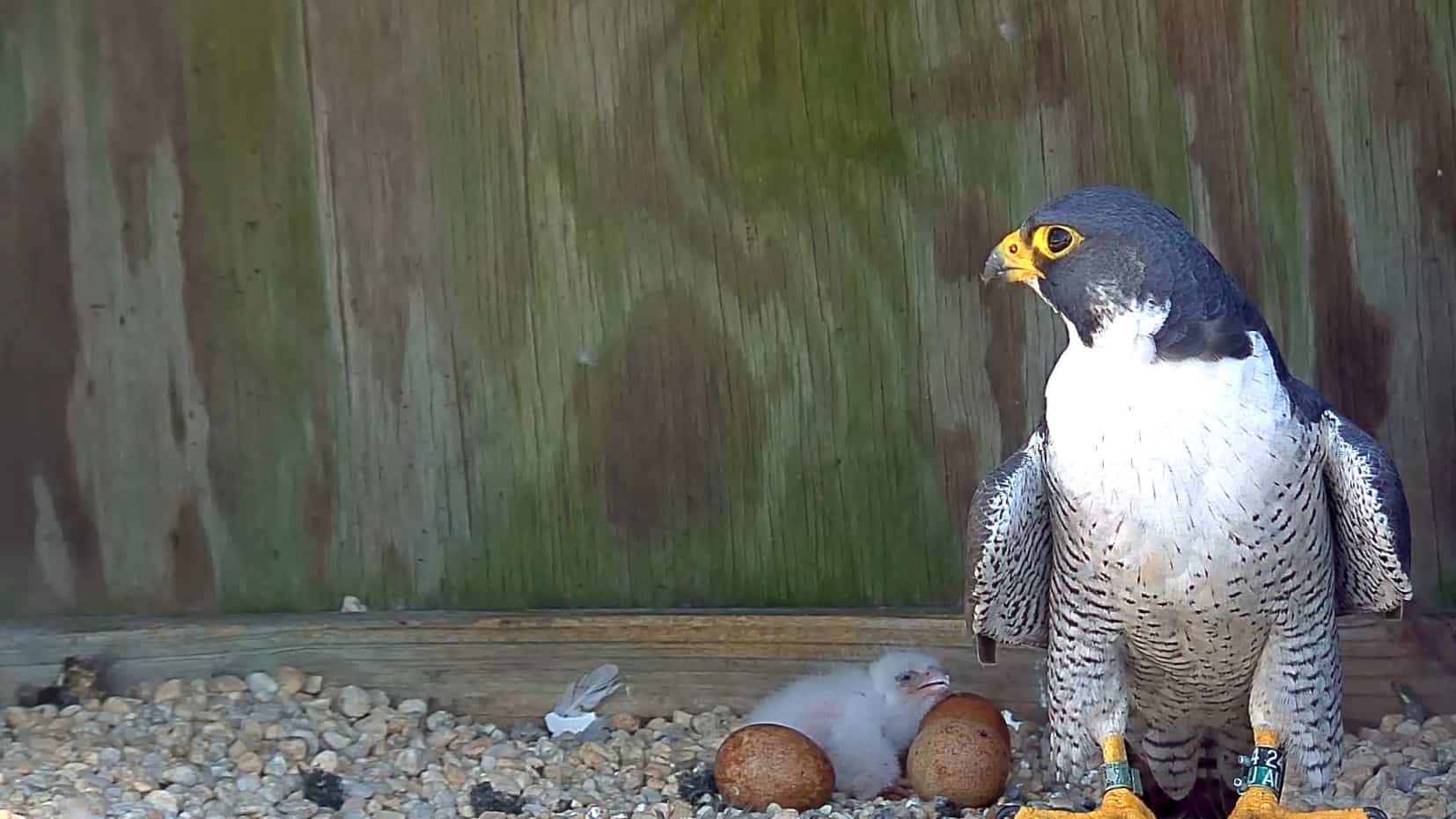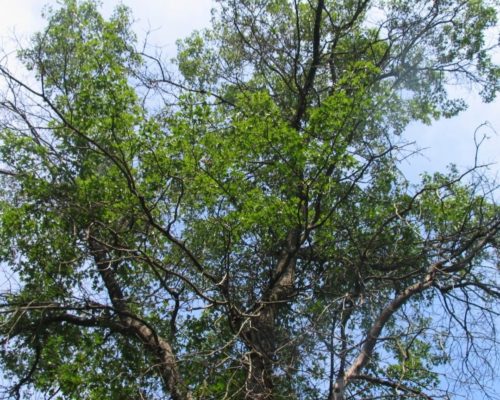Anyone who walks on the east side of Baltimore’s waterfront Promenade with a keen eye has seen them: an impressive gathering of turtles sunning themselves in a canal adjacent to Living Classrooms along Lancaster Street in Harbor East.
Now, these shelled urban residents have their very own “Turtle Island”, a structure designed and built just for turtle basking. The 100-square-foot floating platform is part of Baltimore’s push to support local wildlife in post-industrial Baltimore with manmade structures.

Aquatic turtles bask in the canal on any available floating object, from logs to old, unused containment booms. The new turtle island offers shallow-water habitat for sleeping turtles and marsh habitat for hatchlings. It’s meant to recreate the natural habitat that would have existed in that spot centuries ago.
“Prior to European arrival, this canal would have been tidal marsh habitat supporting a variety of species,” said Jack Cover, general curator at the National Aquarium. “Many of the species are still here and, though we’re not going to transform this highly urbanized environment back to a pristine state, we can install constructed habitats to help fill that void.”
Cover designed and built the habitat over this winter. Waterfront Partnership, the National Aquarium, Clearwater Mills (of trash wheel fame), and Living Classrooms Foundation all worked together on the project.
In addition to the benefits for the turtles themselves, the turtle island allows city residents and visitors to get acquainted with native species they may not have been aware of in the harbor.
“Visitors and city residents can sit on nearby benches, observe these charismatic reptiles, and ideally develop an interest in the wellbeing of our Harbor and these urban-adapted species,” says Dr. Micah Miles, a staff scientist at Waterfront Partnership who helped Cover with the habitat.
Now may be a great time to go check out the turtle island. Spring is prime turtle basking time, as the aquatic animals emerge from hibernation and begin to feed and reproduce, activities which require higher body temperatures.
Waterfront Partnership’s Healthy Harbor Initiative has more plans to support wildlife at the Baltimore Harbor this spring. The organization will also install birdhouses, bat boxes, and insect hotels along the waterfront.
-Meg Walburn Viviano




